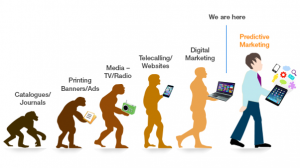As promised a couple of weeks ago, I am very happy to share Part 2 of a webcast series highlighting how SAS participates in the space of digital analytics for data-driven marketing with applications for personalization and attribution. Before launching the video, let me set some context for what you are about to see.
Why do we care about the intersection of digital analytics and personalization? Honestly, it is increasingly important to predict how customers will behave so you can personalize experiences with relevance. The deeper your understanding of customer behavior and lifestyle preferences, the more impactful personalization can be. However, digital personalization at the individual level remains elusive for most enterprises who face challenges in data management, analytics, measurement, and execution. As customer interactions spread across fragmented touch points and consumers demand seamless and relevant experiences, content-oriented marketers have been forced to re-evaluate their strategies for engagement. But the complexity, pace and volume of modern marketing easily overwhelms traditional planning and design approaches that rely on historical conventions, myopic single-channel perspectives and sequential act-and-learn iteration.
The majority of technologies in use today for digital personalization have generally failed to effectively use predictive analytics to offer customers a contextualized digital experience. Most are based on simple rules-based recommendations, segmentation and targeting that are usually limited to a single customer touch point.  Despite some use of predictive techniques, digital experience delivery platforms are behind in incorporating predictive analytics to contextualize experiences using 1st-, 2nd- and 3rd-party customer data. In my opinion, I believe the usage of digital data mining and predictive analytics to prioritize and inform the marketing teams on what to test, and to analytically define segment audiences prior to assigning test cells, is a massive opportunity. Marketers are very creative, and can imagine hundreds of different testing ideas – which tests do we prioritize if we cannot run them all? This is where advanced analytics can help inform our strategies in support of content optimization, as it allows the data to prioritize our strategy, and help us focus on what is important.
Despite some use of predictive techniques, digital experience delivery platforms are behind in incorporating predictive analytics to contextualize experiences using 1st-, 2nd- and 3rd-party customer data. In my opinion, I believe the usage of digital data mining and predictive analytics to prioritize and inform the marketing teams on what to test, and to analytically define segment audiences prior to assigning test cells, is a massive opportunity. Marketers are very creative, and can imagine hundreds of different testing ideas – which tests do we prioritize if we cannot run them all? This is where advanced analytics can help inform our strategies in support of content optimization, as it allows the data to prioritize our strategy, and help us focus on what is important.
Moving on to our second subject of interest, we transition to the wonderful world of marketing attribution. At the very core of this topic, modern marketers recognize that customers expect brands to deliver relevant conversations across all channels at any given moment. The challenge is to uncover the interactions that drive conversions through integrated measurement and insights. However, organizations struggle to employ a holistic measurement approach because:
- It's confusing to distinguish among the measurement approaches available.
- Marketers bombard customers with extraneous content.
- Today's misaligned data makes customer level measurement a very difficult task.
It seems like attribution has been a problem for marketers for a very long time. According to a popular quote by Avinash Kaushik of Google:
“There are few things more complicated in analytics (all analytics, big data and huge data!) than multichannel attribution modeling."
The question is: Why is it challenging? SAS strongly believes three years later that we are living in a game-changing moment within digital analytics. Marketers are being enabled with approachable and self-service analytic capabilities, and this trend directly impacts our ability to improve our approaches to problems like attribution analysis. However, rules-based methods of attribution channel weighting continue to be far more popular in the industry to date, which contradicts the recent analytic approachability trend. The time has arrived for algorithmic attribution . . . 
Did I whet your appetite? I hope so...please enjoy episode two of our two-part webcast series, now available for on demand viewing:
SAS for Digital Analytics: Personalization and Attribution [Part 2]
SAS Customer Intelligence offers a one-stop modern marketing platform to comprehensively support the objectives of predictive personalization and algorithmic attribution - from digital data collection, management, predictive analytics, omnichannel journey orchestration, delivery across online and offline channels, and measurement. On April 19 at SAS Global Forum 2016, SAS Customer Intelligence 360 will make its debut, and subjects like digital intelligence and predictive personalization will be primary topics. This new offering will drive unprecedented innovation in customer analytics and data-driven marketing, putting predictive analytical intelligence directly in the hands of digital and integrated marketers responsible for the customer experience.
If you enjoyed this article, be sure to check out my other work here. Lastly, if you would like to connect on social media, link with me on Twitter or LinkedIn.
